In today’s automotive landscape, vehicle maintenance and reliability have become increasingly important factors influencing buying decisions and ownership satisfaction. As vehicles grow more complex, powered by advancements in electronics, computer systems, and mechanical engineering, drivers face new challenges and considerations when it comes to upkeep.
Among these, two contrasting vehicle maintenance experiences stand out distinctly: those cars engineered for long service intervals, minimizing trips to the mechanic, and those notorious for constant alerts that often overwhelm or frustrate owners with frequent warnings and notifications.
Understanding these differences is crucial not only for prospective buyers but also for anyone invested in the total cost and convenience of vehicle ownership.
The appeal of vehicles with long service intervals lies in the promise of fewer maintenance visits, reduced costs, and less downtime. These vehicles benefit from advanced engineering, higher quality materials, and sophisticated monitoring systems designed to optimize performance and durability.
In an era where time is a precious commodity and convenience is paramount, cars that stretch the intervals between oil changes, fluid flushes, and routine inspections provide owners with the freedom to enjoy their vehicle without constant interruptions.
Whether it’s a family sedan like the Toyota Camry or a luxury crossover such as the Lexus RX, the design philosophy behind these vehicles emphasizes reliability and ease of ownership.
Long service intervals are often made possible through innovations such as synthetic oils that last longer, advanced engine management systems that keep components cleaner and running more efficiently, and robust transmission designs that require less frequent fluid changes.
These engineering improvements, paired with intelligent onboard diagnostic systems, enable vehicles to alert owners only when truly necessary, preventing premature servicing and unnecessary expenses. The overall result is a smoother ownership experience with fewer surprises and a better return on investment over the vehicle’s lifespan.
On the other hand, vehicles with constant alerts paint a very different picture. While modern cars are equipped with a myriad of sensors and electronic systems intended to improve safety and performance, the sheer volume and sensitivity of these systems can sometimes become a double-edged sword.
Drivers of vehicles like the Jeep Grand Cherokee or BMW X5 frequently report persistent warning lights, frequent maintenance reminders, and safety alerts that seem to activate without clear cause. While these alerts aim to keep drivers informed and safe, the overabundance of warnings can lead to distraction, alert fatigue, and even a lack of trust in the vehicle’s monitoring systems.
The constant barrage of alerts is often the result of complex electronic architectures with multiple overlapping control units and sensor networks. These systems continuously monitor hundreds of variables — from tire pressure and brake pad wear to engine emissions and stability control.
While this information is invaluable for maintaining vehicle health and driver safety, it can sometimes cause notifications to trigger prematurely or unnecessarily, especially when combined with software glitches or calibration issues.
Environmental factors such as temperature fluctuations, road conditions, or even the way a vehicle is parked can also set off these sensitive systems, compounding the frequency of alerts.
From a driver’s perspective, frequent alerts can be more than just a minor annoyance; they can detract from the overall driving experience and increase the cost and complexity of maintenance.
Dealing with persistent warning lights often requires multiple dealer visits for diagnostics and resets, adding inconvenience and potential expense. Moreover, the psychological impact of constant alerts can erode confidence in the vehicle, leading owners to question whether their car is truly reliable or simply prone to electronic quirks.
In this article, we will delve into five vehicles known for their long service intervals, exploring how their engineering, design, and technology contribute to reduced maintenance needs. We will contrast these with five vehicles that, despite their many strengths, are infamous for their constant alerts and the challenges that come with them.
By examining these two extremes, readers can better appreciate the trade-offs and realities of modern vehicle ownership, enabling them to make more informed decisions based on their personal preferences, lifestyles, and priorities.
Whether you value the peace of mind that comes from extended maintenance schedules or want to understand the implications of owning a highly connected vehicle with frequent alerts, this comprehensive overview will provide valuable insights.
Ultimately, the choice between these types of vehicles highlights a broader conversation about the balance between technological sophistication and practical reliability in the automotive world today.
Also Read: 5 Hybrids With the Best Traction Off-Road and 5 Slipping Behind
5 Vehicles With Long Service Intervals
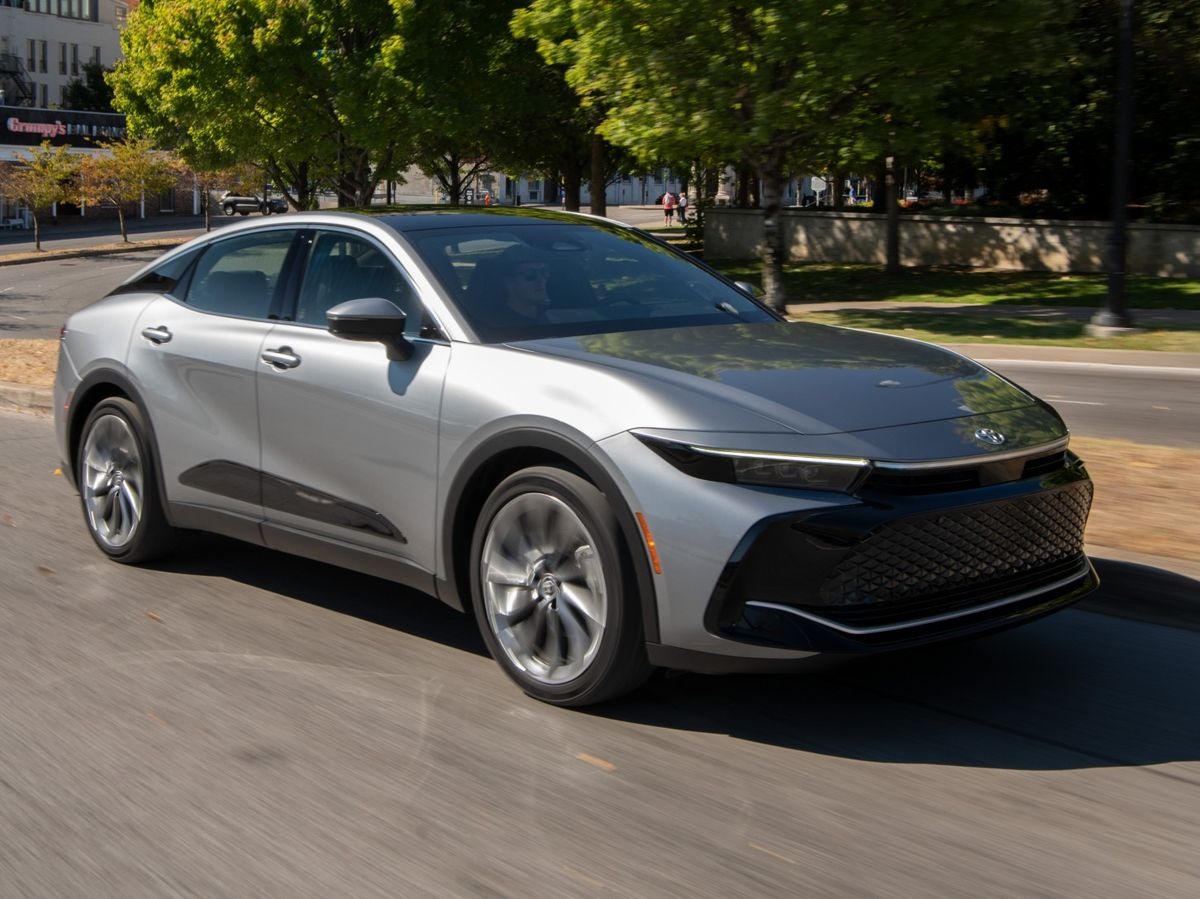
1. Toyota Camry
The Toyota Camry is often regarded as the gold standard for reliability, and this reputation extends strongly into its maintenance schedule. With service intervals that can stretch up to 10,000 miles or 12 months for standard oil changes and inspections, the Camry exemplifies Toyota’s commitment to longevity and reduced ownership costs.
This extended interval is a product of years of incremental improvements in engine design, materials, and manufacturing precision. Toyota’s engineers have optimized the Camry’s engine and ancillary systems to withstand long periods of operation without significant degradation, allowing owners to enjoy uninterrupted driving with minimal trips to the mechanic.
One of the key technological factors contributing to the Camry’s long service intervals is the use of synthetic oils and highly efficient filtration systems. Synthetic oil breaks down more slowly and resists thermal degradation better than conventional oils, which means the oil maintains its protective qualities over longer mileage.
Additionally, Toyota’s oil filtration technology ensures that impurities and contaminants are captured effectively, reducing engine wear. This combination allows the Camry’s engine to maintain optimal lubrication and cleanliness, even over extended periods, thereby extending the interval between oil changes and other routine services.
Another aspect of the Camry’s maintenance advantage lies in its engine management system, which incorporates variable valve timing and direct fuel injection. These technologies optimize combustion efficiency and reduce the buildup of harmful deposits within the engine.
By precisely controlling fuel delivery and valve timing, the engine operates cleaner and cooler, contributing not only to performance but also to the longevity of internal components.
Toyota’s maintenance reminders are based on real-time data from sensors monitoring oil condition, driving habits, and environmental factors, which helps prevent unnecessary early servicing and ensures interventions happen only when genuinely required.
The Camry’s chassis and transmission systems also benefit from Toyota’s engineering focus on durability. The transmission fluid is often rated for extended intervals, and the robust suspension components require less frequent adjustments or replacements.
This holistic approach means that it is not just the engine but the entire vehicle architecture that supports longer service intervals. The availability of widely accessible Toyota dealerships and experienced technicians further complements the ownership experience by making scheduled maintenance both convenient and cost-effective.
Lastly, Toyota’s long service intervals have a positive impact on the vehicle’s resale value. Potential buyers are aware of the Camry’s reputation for reliability and low maintenance, which translates to greater confidence in purchasing used models.
This cycle of trust reinforces the Camry’s position in the market as an ideal choice for drivers who prioritize hassle-free ownership and cost-efficiency. Overall, the Camry’s combination of advanced engineering, smart maintenance scheduling, and durable components sets a benchmark for vehicles with extended service intervals.

2. Honda CR-V
The Honda CR-V is another strong contender in the segment of vehicles boasting long service intervals, reflecting Honda’s broader philosophy of engineering for longevity and low cost of ownership.
Typically, the CR-V requires oil changes and routine maintenance every 7,500 to 10,000 miles, a range that offers significant convenience compared to more traditional 3,000 to 5,000-mile intervals seen in many vehicles.
This extended service interval is particularly valuable for CR-V owners, many of whom use the vehicle as a family car or daily commuter, where reducing downtime and maintenance costs is a key consideration.
Honda achieves these longer intervals through a combination of engine technology, material selection, and smart fluid management. The CR-V’s i-VTEC engine utilizes variable valve timing technology that allows the engine to adjust valve operation dynamically for better fuel economy and lower emissions.
This precise control helps reduce internal engine wear and decreases the frequency with which oil and filters need to be replaced. Honda also employs synthetic motor oils and robust oil filtration systems to further extend oil life and keep the engine clean and well-lubricated over longer periods.
In addition to the engine, the CR-V’s transmission is designed for smooth, efficient operation that minimizes wear on internal components. Transmission fluid is engineered to resist thermal breakdown, which enables longer fluid change intervals and fewer transmission-related maintenance visits.
Honda also designs the CR-V’s chassis and suspension systems to withstand daily driving stresses without frequent repairs, with components that offer a good balance between durability and comfort.
The CR-V’s onboard maintenance reminder system is another feature that supports extended service intervals. Rather than relying solely on mileage, this system factors in engine operating conditions, driving style, and environment to tailor maintenance schedules to the actual usage pattern of the vehicle.
This smart system prevents unnecessary early servicing while ensuring that critical maintenance isn’t overlooked, preserving the vehicle’s reliability and performance over time.
Furthermore, Honda’s reputation for building vehicles that retain value well is bolstered by the CR-V’s extended service intervals. The combination of low maintenance frequency and well-documented reliability makes the CR-V an attractive option for buyers looking for a dependable SUV that won’t require frequent or costly service. For many drivers, this translates into peace of mind and reduced lifetime cost of ownership.
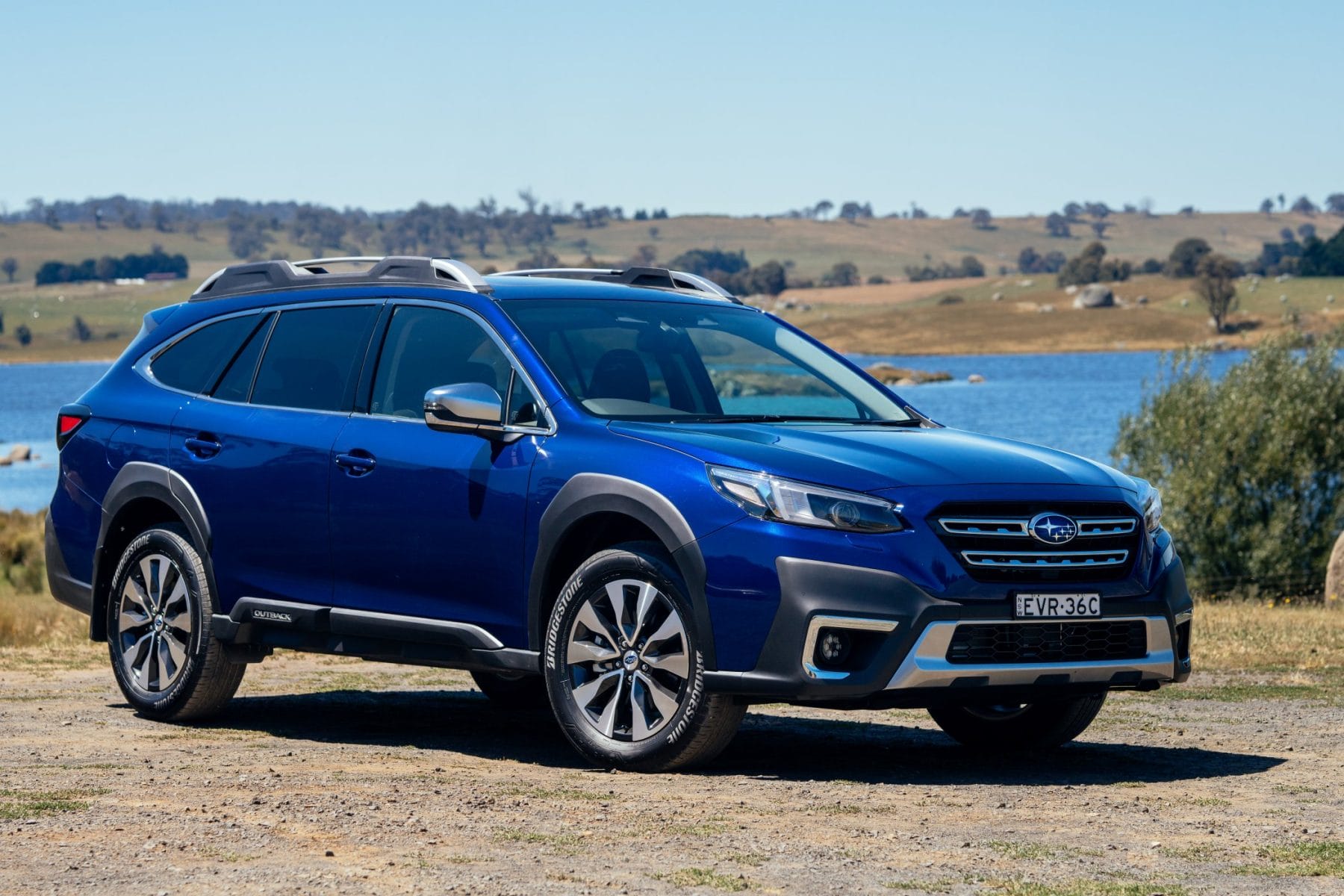
3. Subaru Outback
The Subaru Outback stands out not only for its rugged design and all-wheel-drive capability but also for a maintenance schedule that favors longer service intervals, especially when synthetic oils are used.
Typically, oil changes and basic service are recommended every 6,000 to 7,500 miles, though this can be extended depending on driving habits and conditions. Subaru’s distinctive Boxer engine layout contributes to this durability by offering a lower center of gravity and less vibration, which reduces mechanical stress and component wear.
The horizontally opposed Boxer engine in the Outback allows for balanced engine operation, which minimizes the pounding and stress common in inline or V-shaped engines.
This balance results in less wear on engine mounts, bearings, and seals, which translates to fewer leaks and failures requiring service. Moreover, Subaru’s commitment to high-quality oil filtration and the use of synthetic oils further enhances the engine’s ability to operate cleanly for extended periods.
Subaru also incorporates an advanced service monitoring system that uses inputs from multiple sensors to provide accurate maintenance alerts.
This system evaluates not just mileage but engine load, temperature, and operating conditions to recommend service at optimal times. This prevents premature maintenance that wastes time and money while ensuring the vehicle remains in peak condition.
The Outback’s all-wheel-drive system, a core feature, is designed with durability in mind, requiring less frequent fluid changes and mechanical interventions than many competitors.
The drivetrain components use robust materials and engineering to minimize wear, contributing to extended maintenance intervals. Additionally, Subaru’s reputation for rugged reliability means that many components are built to withstand rougher conditions without increasing the service burden on owners.
Finally, Subaru’s user-focused approach extends beyond engineering into clear maintenance documentation and support. Owners receive straightforward guidance on maintenance tasks, helping them adhere to recommended schedules easily.
This support, combined with the vehicle’s inherent durability, ensures that the Outback remains a favorite for those looking for a dependable, low-maintenance vehicle that performs well in a variety of conditions.

4. Lexus RX
The Lexus RX represents the luxury segment’s approach to extending service intervals without compromising performance or comfort. Luxury buyers expect vehicles that not only deliver refinement and advanced features but also minimize the inconvenience of frequent servicing.
Lexus achieves this by recommending oil changes and other routine services approximately every 10,000 miles or annually, a service schedule comparable to some of the best non-luxury vehicles.
At the heart of the RX’s long service intervals is its meticulously engineered V6 engine, which features advanced direct injection, variable valve timing, and premium synthetic oil formulations.
These technologies collectively improve combustion efficiency, reduce carbon buildup, and maintain engine cleanliness for longer durations. The direct injection system allows for precise fuel delivery that keeps the engine running smoothly while reducing the frequency of oil contamination.
The RX also benefits from Lexus’ use of high-grade components and stringent quality control in manufacturing. From suspension bushings to brake components, each part is designed for durability, reducing the wear and tear that would otherwise necessitate earlier service.
The vehicle’s electronic systems are calibrated to optimize performance and minimize mechanical strain, contributing to longer-lasting parts.
Lexus also implements advanced onboard diagnostics that monitor vehicle health in real time and adjust service reminders accordingly. This means the RX alerts owners only when necessary, preventing unnecessary service visits.
The brand’s emphasis on customer service and comprehensive warranties also encourages owners to maintain their vehicles according to schedule, enhancing long-term reliability.
Finally, the RX’s balance of luxury, technology, and extended service intervals makes it a standout in the luxury crossover market. Buyers benefit from reduced maintenance downtime, fewer unexpected repairs, and a smoother ownership experience overall.
Lexus’ reputation for quality and dependability, supported by these long service intervals, makes the RX a compelling choice for those who desire a premium vehicle with practical maintenance demands.

5. Mercedes-Benz E-Class
The Mercedes-Benz E-Class is renowned for blending luxury, performance, and technology with an emphasis on reducing maintenance inconvenience through long service intervals.
Mercedes-Benz engineers have focused on extending oil change intervals, sometimes up to 15,000 miles depending on the engine and model year, which significantly reduces routine service visits. This focus aligns with Mercedes’ goal of offering a prestigious vehicle that is as effortless to maintain as it is to drive.
The E-Class achieves these intervals through the use of high-quality synthetic oils, advanced oil filtration, and real-time engine condition monitoring.
The company’s proprietary engine management systems dynamically adjust to driving conditions to minimize wear and tear on internal components. For example, turbocharged engines are carefully calibrated to optimize combustion temperature and pressure, reducing the degradation of lubricants and engine parts.
Mercedes-Benz also invests heavily in the durability of drivetrain and suspension components, ensuring that fluid change intervals for transmissions and differentials are extended without compromising reliability. Their engineering focus on robust construction means fewer unexpected repairs and longer-lasting components, which further complements the vehicle’s long service schedule.
The E-Class’s onboard diagnostics system is highly sophisticated, using data from multiple sensors to provide precise maintenance alerts based on actual vehicle conditions rather than fixed mileage.
This helps avoid premature servicing and ensures maintenance is performed when truly necessary. Combined with Mercedes-Benz’s extensive dealership network and premium service programs, owners benefit from an ownership experience that prioritizes convenience and peace of mind.
In sum, the Mercedes-Benz E-Class epitomizes how luxury vehicles can successfully marry advanced technology with practical maintenance schedules. Its long service intervals reduce ownership costs and vehicle downtime, enhancing the overall appeal of this iconic sedan for discerning buyers who demand excellence without hassle.
5 Vehicles With Constant Alerts

1. Jeep Grand Cherokee
The Jeep Grand Cherokee is widely praised for its off-road capabilities and rugged design, but one aspect that owners often find frustrating is its tendency to issue frequent and sometimes confusing alerts. These can range from tire pressure warnings to engine fault indicators and traction control notifications.
While safety and performance features depend heavily on electronic sensors and control modules, the integration of so many systems sometimes results in false positives or alerts triggered by minor or transient conditions. This over-alerting can undermine driver confidence and become a distraction during everyday driving.
Much of the Grand Cherokee’s alert behavior is linked to its complex electronic architecture. The vehicle is equipped with multiple control units managing everything from the powertrain to the stability control system and advanced driver assistance features.
These systems continuously monitor hundreds of parameters to optimize safety and performance, but this complexity can lead to conflicting or overly sensitive signals. For example, the interaction between the electronic stability control and the off-road traction system can generate warnings even when the vehicle is operating normally on challenging terrain.
The tire pressure monitoring system (TPMS) on the Grand Cherokee is notably sensitive to environmental changes such as temperature drops, which can cause pressure variations that prompt low-pressure alerts. While this is a safety feature designed to prevent tire failure, frequent alerts when temperatures fluctuate can become a nuisance.
In addition, some owners report persistent engine warning lights due to minor sensor malfunctions or emissions system quirks, requiring repeated dealer visits to diagnose and reset.
Software issues also contribute to the barrage of alerts. Like many modern vehicles, the Grand Cherokee relies on regular updates to its electronic control modules.
If these updates are missed or not properly installed, sensor miscommunications can result in spurious warnings. Despite the intention of keeping the driver informed, the net effect is sometimes a frustrating cycle of alerts that may not correspond to urgent problems, leading to “alert fatigue.”
Lastly, Jeep owners often express mixed feelings about these frequent notifications. While the systems aim to enhance safety and vehicle performance, the downside is a potentially overwhelming number of warnings that can detract from the ownership experience.
Understanding these alerts and their causes is important for owners, who must sometimes balance trust in technology with practical maintenance and troubleshooting.
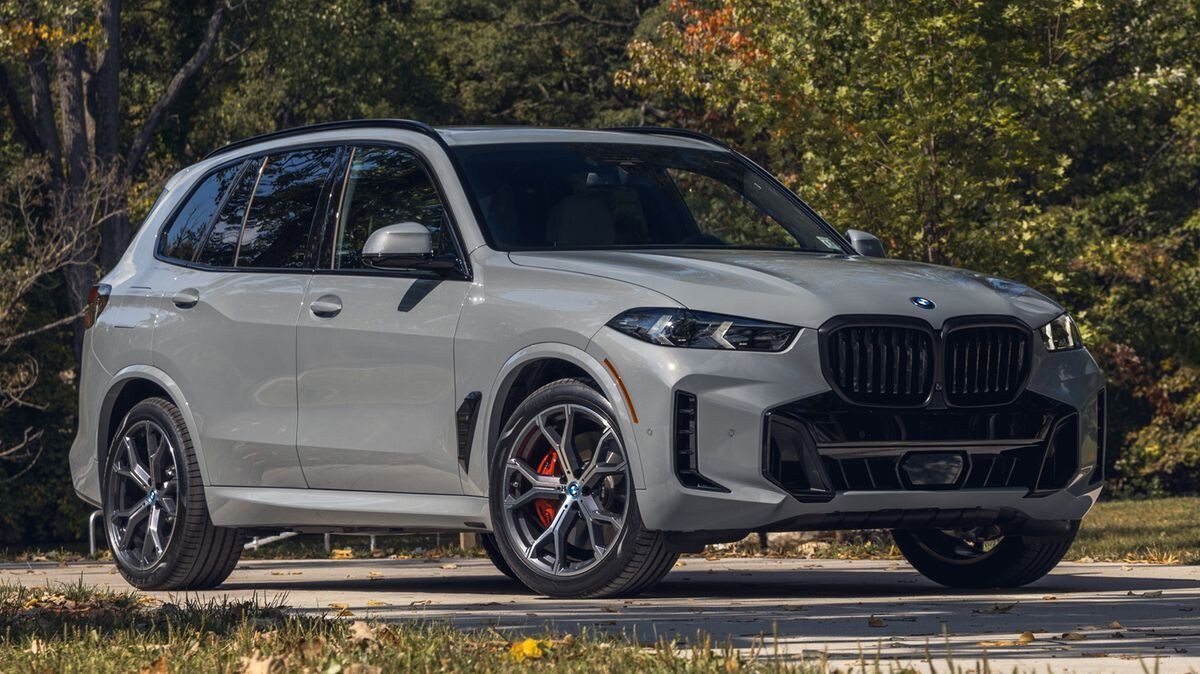
2. BMW X5
The BMW X5 is a luxury SUV that prides itself on blending high performance with sophisticated technology. However, a common complaint among X5 owners is the prevalence of constant alerts, from engine oil notifications to brake system warnings and electronic stability control messages.
These alerts, while designed to inform and protect, can often feel intrusive and overly frequent, especially when they seem to arise without clear cause or visible symptoms.
BMW’s commitment to advanced vehicle monitoring means the X5 is outfitted with a complex suite of sensors that continuously assess engine performance, brake condition, fluid levels, and other critical systems. While this level of monitoring enhances safety and driving experience, it also means the system may flag minor variations as warnings, erring on the side of caution.
For example, brake pad wear sensors can trigger alerts as soon as pads reach a certain threshold, which may feel premature compared to actual driving conditions.
The oil life monitoring system in the X5 is particularly sensitive, using engine operating data to estimate oil degradation and recommend changes.
This smart system is more accurate than fixed-interval changes but can also prompt alerts that some drivers feel are too early or too frequent, especially if driving habits involve short trips or city driving that accelerate oil contamination.
BMW’s infotainment system also plays a role in the alert experience, as it integrates service reminders, warning messages, and diagnostic information into a single user interface. While this centralized approach helps drivers stay informed, it can sometimes be overwhelming when multiple alerts appear simultaneously or persist despite recent maintenance.
Finally, some of the X5’s constant alerts stem from software glitches or sensor calibration issues, which occasionally require dealer diagnostics and resets.
This need for ongoing electronic upkeep adds complexity to ownership. While the alerts intend to prevent serious issues and maintain peak performance, their frequency sometimes challenges the balance between technological sophistication and user-friendliness.

3. Land Rover Discovery
The Land Rover Discovery is famous for its off-road capability and luxury features, but it also has a reputation for generating persistent and sometimes perplexing alerts.
Owners frequently report warnings related to the air suspension system, engine diagnostics, and brake system faults that may continue after repairs or even appear without clear cause. These alerts can be a source of frustration, detracting from the otherwise premium driving experience.
Much of the alert frequency in the Discovery can be traced to its advanced air suspension system, which automatically adjusts ride height and damping based on driving conditions.
This system relies on numerous sensors and control modules that monitor suspension position, pressure, and vehicle load. While this technology provides excellent ride comfort and off-road adaptability, it also makes the system prone to alerting the driver when sensor readings fall outside narrow tolerances, even if the vehicle operates normally.
The complexity of the Discovery’s electronic architecture means that some alerts arise from sensor calibration issues or software bugs. Land Rover vehicles often require dealer-level diagnostics to reset certain warnings, making ownership more complex and potentially costly. Persistent alerts for seemingly minor issues may lead to repeated dealer visits, causing inconvenience and reducing owner satisfaction.
Additionally, the harsh environments in which many Discovery vehicles operate—such as off-road trails or extreme weather—can trigger sensor warnings. Mud, water ingress, or temperature fluctuations affect sensor readings, leading to alerts that may not reflect immediate safety concerns but still require attention or resets. This sensitivity highlights a trade-off between cutting-edge technology and real-world reliability.
Despite these challenges, the Land Rover Discovery remains a favorite for those who value its unique blend of luxury, capability, and technology. However, prospective buyers should be aware of the alert system’s sensitivity and the potential for frequent notifications that require maintenance or dealer intervention.
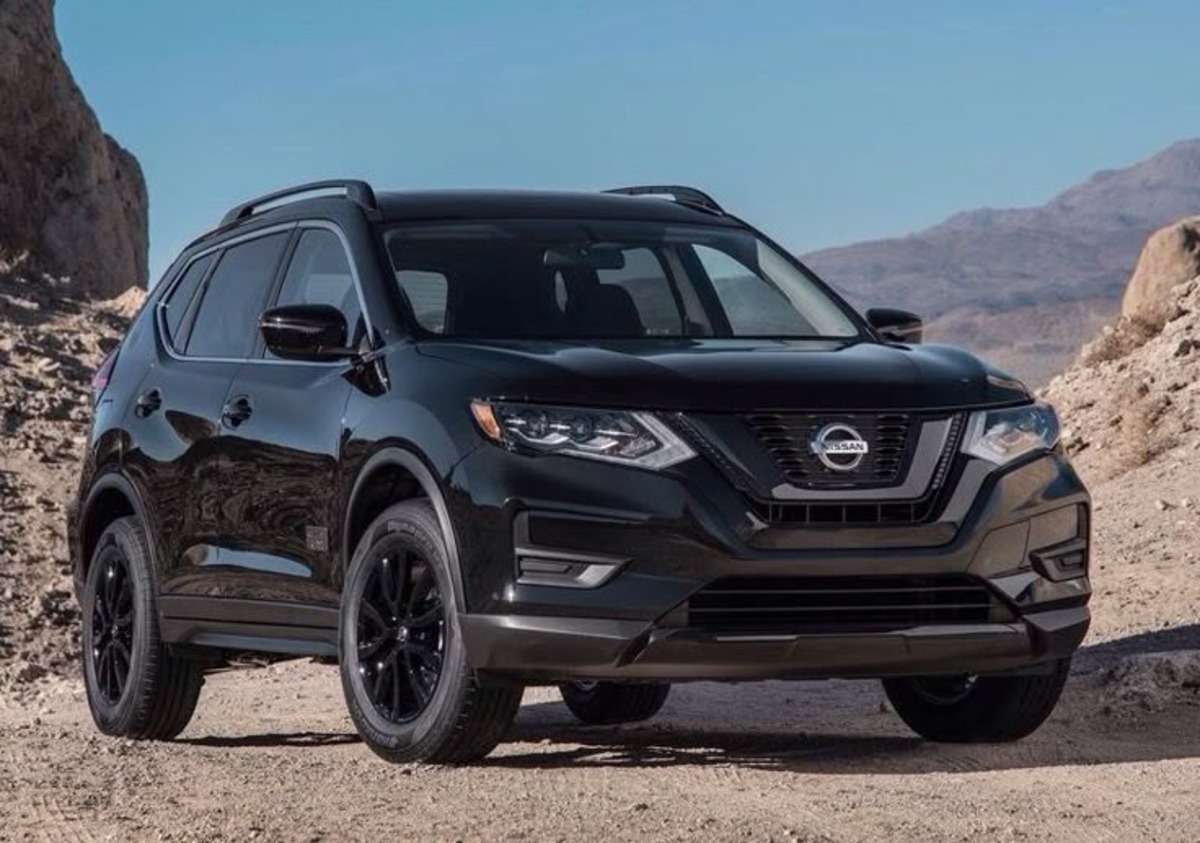
4. Nissan Rogue
The Nissan Rogue is one of the most popular compact SUVs on the market, praised for its value, fuel efficiency, and family-friendly features.
However, it is also frequently noted for generating a high volume of alerts and warnings, especially related to tire pressure, maintenance reminders, and safety systems like lane departure warnings and forward collision alerts. While these features enhance safety, their frequency can lead to driver annoyance or distraction.
A major source of alerts in the Rogue is the tire pressure monitoring system, which is highly sensitive to small changes in pressure.
Environmental factors such as temperature fluctuations, altitude changes, or even slight leaks can cause repeated low tire pressure warnings. While these alerts aim to prevent tire failures, their sensitivity sometimes results in warnings that do not require immediate action, creating what some drivers perceive as “alert noise.”
The vehicle’s advanced driver assistance systems, including lane keeping assist and collision avoidance, also contribute to frequent alerts. These systems use cameras and radar to monitor road position and traffic, triggering warnings if the vehicle drifts or approaches obstacles too closely.
While these alerts are beneficial for safety, they can sometimes activate inappropriately—for example, on poorly marked roads or in heavy traffic—causing frequent audible and visual warnings.
Maintenance reminders in the Rogue are another source of constant alerts. The system calculates service needs based on various sensors and driving conditions, but some drivers report that reminders appear too early or persist after maintenance has been performed. This can lead to frustration, especially when combined with other alerts.
Nissan continuously updates its software to improve the accuracy and relevance of these alerts, but the high sensitivity of the Rogue’s alert system remains a notable characteristic. Drivers benefit from enhanced safety but must also tolerate the frequent notifications that come with modern monitoring technology.
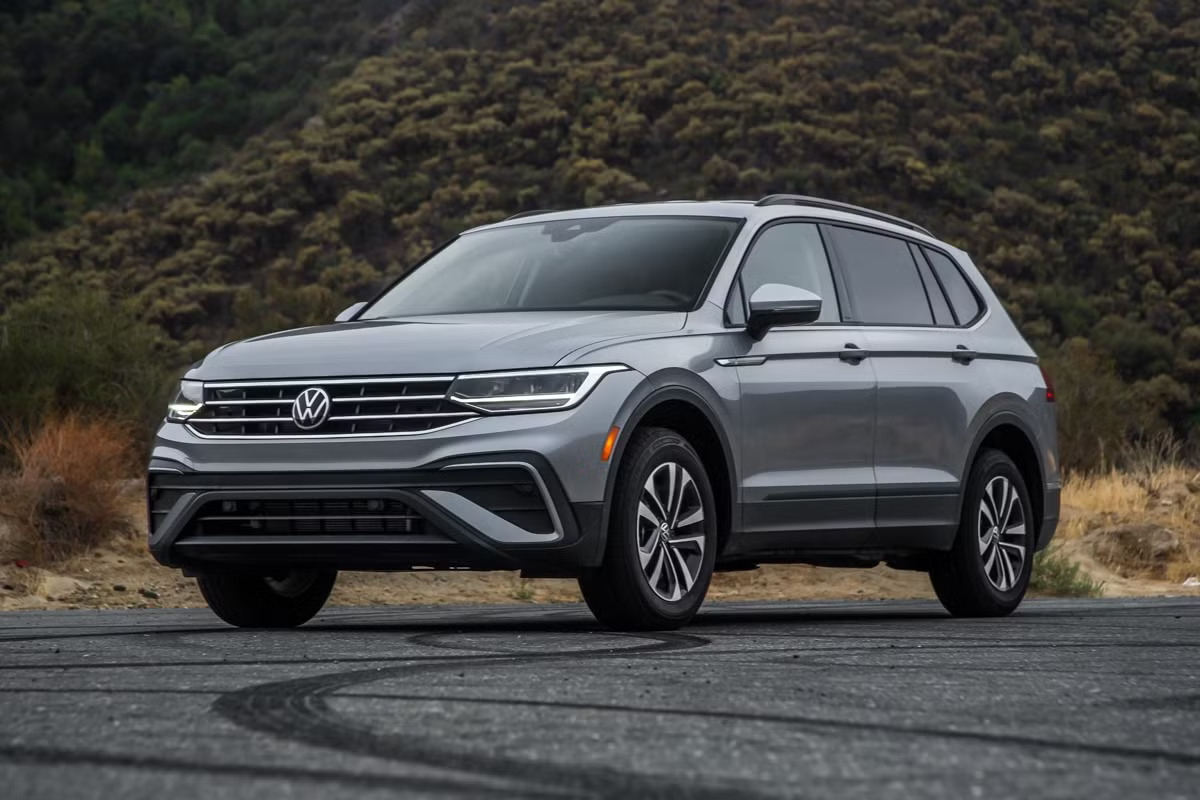
5. Volkswagen Tiguan
The Volkswagen Tiguan, a well-regarded compact crossover, features a host of advanced safety and monitoring systems designed to alert drivers to potential issues.
However, these systems often generate frequent and sometimes persistent alerts that can challenge the user experience. Common warnings include engine diagnostics, tire pressure alerts, and notifications related to driver-assistance features such as adaptive cruise control and lane keeping assist.
Volkswagen’s commitment to comprehensive vehicle monitoring means the Tiguan is equipped with numerous sensors tracking everything from emissions to tire wear and brake condition.
While this level of monitoring is intended to maximize safety and reliability, it also results in alert fatigue for many owners. The sensitivity of the tire pressure monitoring system is especially notable, with alerts frequently triggered by minor pressure changes due to temperature shifts or parking on uneven ground.
Software and calibration issues can also cause persistent alerts. In some cases, the Tiguan’s systems require dealer intervention to recalibrate sensors or reset warning lights, which adds to the inconvenience. These software quirks, combined with the vehicle’s alert sensitivity, mean that drivers may encounter recurring warnings even after addressing the underlying issues.
Driver-assistance features integrated into the Tiguan provide additional layers of alerts. Systems like forward collision warning and lane departure assist rely on cameras and radar sensors, which can sometimes produce false positives due to environmental factors such as glare, road markings, or traffic conditions. These false alerts can become distracting or annoying, particularly in urban driving scenarios.
Despite these challenges, the Tiguan remains popular for its blend of practicality, style, and safety. Volkswagen continues to refine its alert systems through software updates, aiming to balance technological sophistication with driver convenience. However, owners should be prepared for a potentially high volume of notifications as part of the ownership experience.
Also Read: 5 Cars With the Cheapest Brake Jobs and 5 With Costly Discs
As we conclude this detailed exploration of vehicles with long service intervals versus those plagued by constant alerts, several key takeaways emerge that highlight the evolving nature of automotive ownership and the trade-offs that come with modern technology.
The stark contrast between these two categories of vehicles sheds light on the complexity and diversity of factors that influence driver satisfaction, reliability, and overall cost of ownership.
Vehicles boasting long service intervals, such as the Toyota Camry, Honda CR-V, Subaru Outback, Lexus RX, and Mercedes-Benz E-Class, stand as exemplars of engineering excellence focused on durability, efficiency, and user convenience.
These vehicles demonstrate how thoughtful design choices—from the use of synthetic oils and advanced filtration systems to sophisticated engine management technologies—can extend the time between required maintenance, reducing both the financial and time burden on owners.
They embody a philosophy where less frequent maintenance is not a compromise on safety or performance but rather a testament to technological progress and high manufacturing standards.
One major advantage of these long-interval vehicles is the predictability and peace of mind they offer. Owners can enjoy their cars without the constant worry of unexpected breakdowns or nagging warnings, allowing them to focus on driving rather than troubleshooting.
Moreover, the cost savings achieved by fewer service visits and extended fluid change intervals translate into a lower total cost of ownership over the vehicle’s lifetime. For families, commuters, and anyone seeking a hassle-free driving experience, these vehicles offer a compelling proposition.
In contrast, vehicles like the Jeep Grand Cherokee, BMW X5, Land Rover Discovery, Nissan Rogue, and Volkswagen Tiguan highlight the challenges and frustrations that can accompany modern vehicle technology in the form of constant alerts and warnings.
While these alerts are rooted in a genuine intent to safeguard the driver and maintain optimal vehicle function, their frequency and sometimes ambiguous nature can overwhelm and confuse owners. The proliferation of sensors and control units, while enhancing safety and performance, often comes at the cost of increased complexity and electronic sensitivity.
The experience of owning a vehicle with persistent alerts can be exhausting. Drivers may find themselves regularly visiting dealerships for diagnostic resets or repairs triggered by sensor glitches or calibration issues.
The constant barrage of warning lights and notifications can also cause alert fatigue, where owners begin to ignore or distrust important warnings due to the high volume of false or minor alerts. This situation not only undermines confidence in the vehicle’s reliability but can also compromise safety if genuine issues are overlooked.
It is important to understand that constant alerts are often a symptom of the increasing complexity and interconnectedness of modern vehicles. As automakers push the boundaries of technology—incorporating advanced driver assistance systems, real-time diagnostics, and extensive sensor networks—the potential for electronic glitches and overly sensitive alerts grows.
Manufacturers are continuously working to refine these systems through software updates and improved sensor calibration, but the challenge remains significant.
For prospective buyers, this comparison highlights a critical consideration: the trade-off between cutting-edge technology and ownership simplicity. Vehicles with frequent alerts may offer impressive features, advanced safety systems, and high performance, but they may also demand more attention and higher maintenance costs.
Conversely, vehicles with long service intervals emphasize reliability and reduced maintenance hassle but may not incorporate the latest technological bells and whistles.
Ultimately, the choice depends on the buyer’s priorities and lifestyle. Those who value minimal downtime and straightforward ownership may gravitate toward vehicles with long service intervals, appreciating the financial and time savings.
Those who prioritize technology, safety features, and luxury, and who are willing to accept the potential inconvenience of frequent alerts, may find the more connected vehicles appealing despite their maintenance quirks.
As automotive technology continues to evolve rapidly, manufacturers will likely continue to seek a balance—developing vehicles that offer advanced features without overwhelming owners with constant warnings.
Improvements in artificial intelligence, sensor technology, and software algorithms hold promise for more intuitive and user-friendly alert systems that can distinguish between critical issues and minor fluctuations.
In summary, understanding the strengths and challenges of both types of vehicles equips drivers with the knowledge to make informed decisions tailored to their needs.
Whether opting for the reliable, low-maintenance route or embracing the technology-rich yet alert-prone path, owners today navigate a complex landscape shaped by innovation, engineering, and evolving consumer expectations. Awareness of these dynamics is key to enjoying a satisfying and confident vehicle ownership experience in the modern era.

